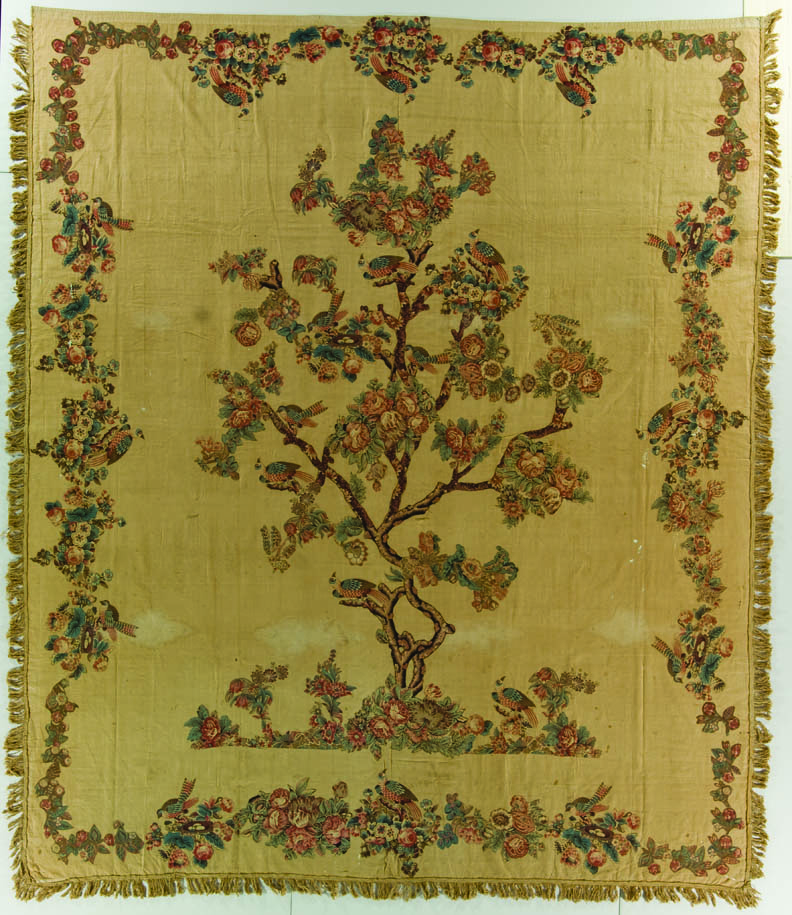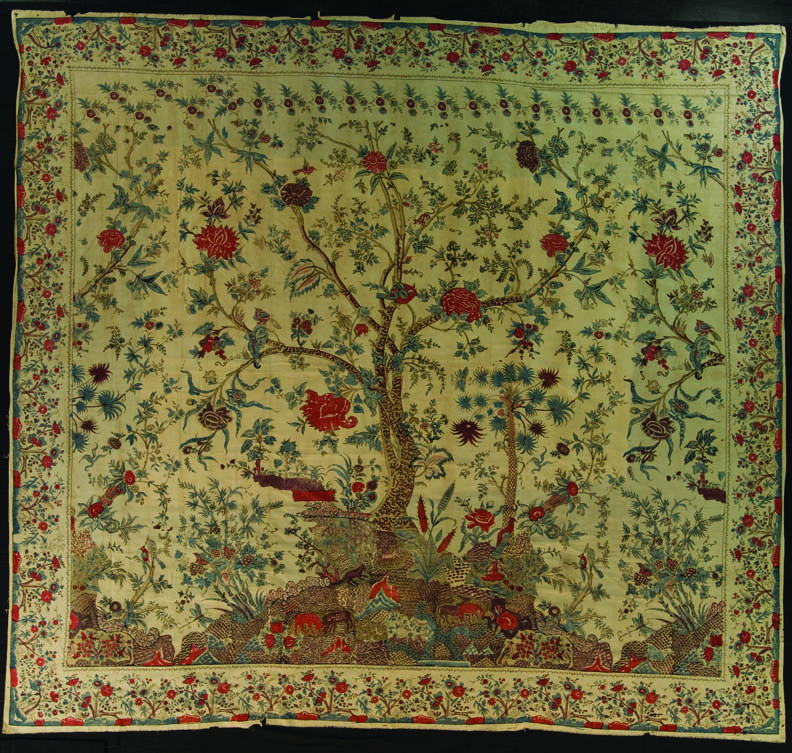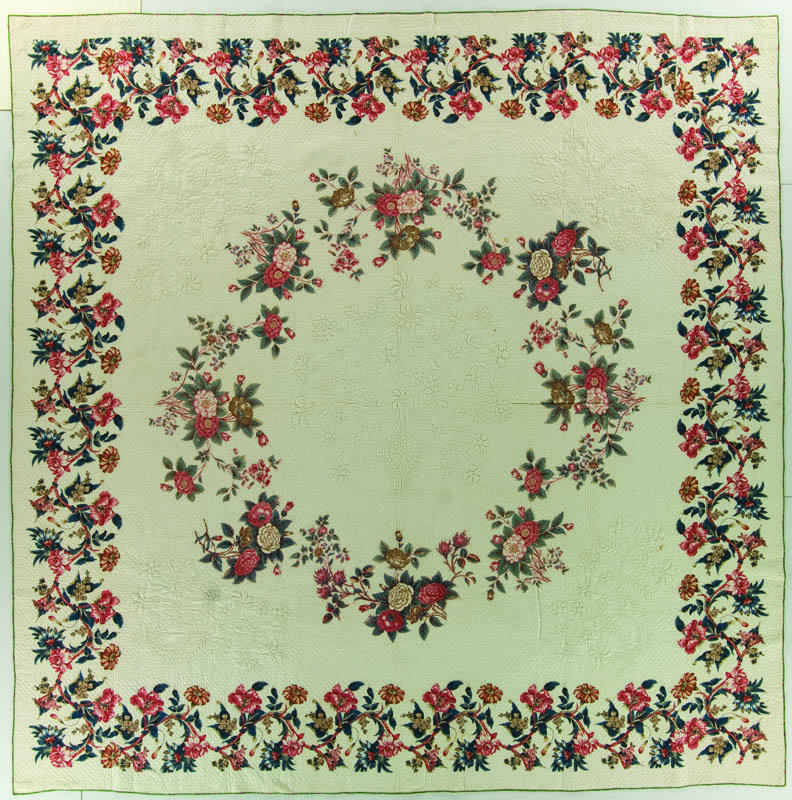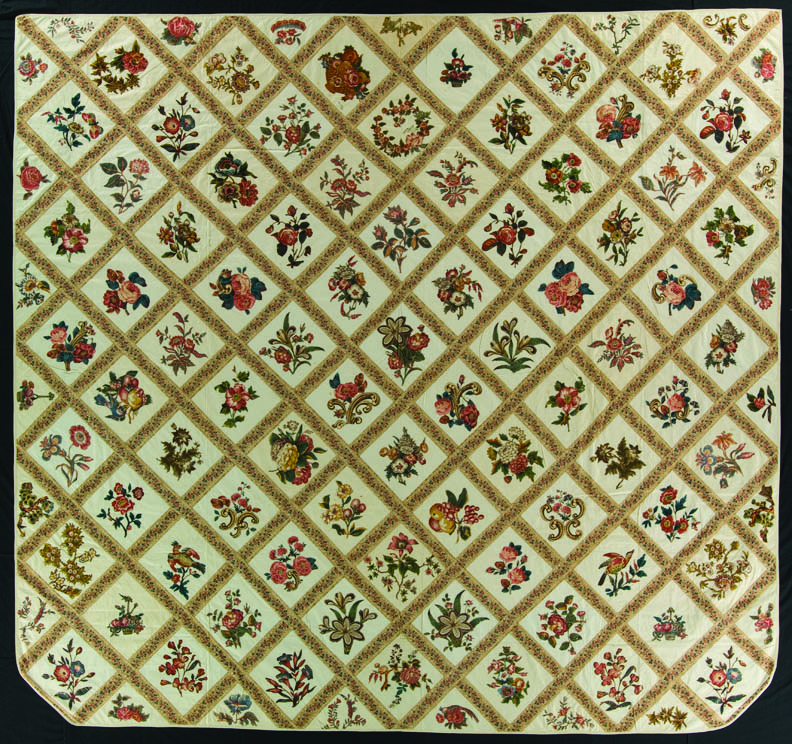
Visitors to the exhibition Chintz Appliqué: From Imitation to Icon are amazed by the size, elegance, vibrant color, and meticulous craftsmanship of these quilts. On view through May 17 at the International Quilt Study Center and Museum, these twenty-one American quilts represent “one of the earliest and most influential international quilt styles,” according to curator Carolyn Ducey.

One of the earliest, dated 1780-1800, depicts a Tree of Life, reflecting its roots in India, when spice traders brought home cotton printed with colorfast dyes along with their ginger and cardamom. Both the fabric and technique were new to Europe, and the vivid color and exotic patterns soon became wildly popular. Demand for “Indiennes” became such that the wool and silk industries felt threatened—and banned chintz imports in 1701.
But there was no turning back—ladies of leisure were indefatigable in getting their chintz, paying top prices for available stashes or through the black market. To maximize their prize fabric, they snipped the flowery motifs and appliquéd them onto solid-colored foundations. A close look at the Tree of Life coverlet reveals two patterns of chintz in the dramatically twisted tree trunk. Birds, roses, and tulips are attached with delicate feather stitches, and the border is also artfully arranged from chintz cuttings.
The design’s hybridization can be seen in comparison with a palampore, or coverlet made by the textile workers in India who were renowned for their skills. The word chintz can be traced to Hindi chint or chitta, meaning spotted. Today it refers to any floral-printed cotton or linen fabric, usually glazed.

By the late 1700s, printing techniques and spinning machines enabled home industries and spelled the end of trade with India, but the enthusiasm for appliqué quilts had taken hold, and it accompanied settlers to the American colonies. Early American quilts display their own locality, and likewise the social status of their makers. These quilts were made as artwork by women, who had discretionary time and money, and were trained in drawing, needlework, and gardening.
Another quilt on view shows the transition to a medallion style, popular during the 1820s and 1830s. Still a central motif on a one-piece foundation, the Tree of Life is replaced by bouquets in vases. In one lovely example, the central arrangement is created by stuffing the stems, leaves, and petals, a technique known today as trapunto. The design is articulated only by its dimensionality and stitched outline. This is surrounded by a chintz rose wreath, stuffed-work cornucopias in each corner, and a continuous outer border of chintz. Later yet, album, or block quilts became popular, such as the extraordinary quilt attributed to Lydia and Lily Corliss. Each of these particular quilts are from the Byron and Sara Rhodes Dillow Collection, a bequest from the estate to the museum last November. Mrs. Dillow was a widely respected quilter, collector, author, and quilt historian and preservationist, whose special interest was early nineteenth-century chintz appliqué quilts. “She loved birds and flowers,” says Ducey.

The fabled Ardis and Robert James Collection is represented in the exhibition by fifteen quilts. The James’s initial gift led to the creation of the International Quilt Study Center in 1997, and their vision launched a new world-class museum and study center, which opened last year. For more information on this exhibition and the museum, visit www.internationalquilmuseum.org.
Images from top to bottom: Tree of Life, maker unknown, possibly made in United States, 1780-1800. Cotton; 113 1/2 x 96 inches. Palampore, maker unknown, probably made in India, 1750-1770. Cotton; 120 x 107 1/2 inches. Medallion, probably made by Jane Knox Bitzel, probably made in Tarrytown, Maryland, 1820-1840. Cotton; 103 1/2 x 103 1/2 inches. Album, possibly made by Lydia Corliss and Lily Corliss, possibly made in Maryland, dated 1843. Cotton; 96 x 101 3/4 inches. All images courtesy of International Quilt Study Center and Museum.
